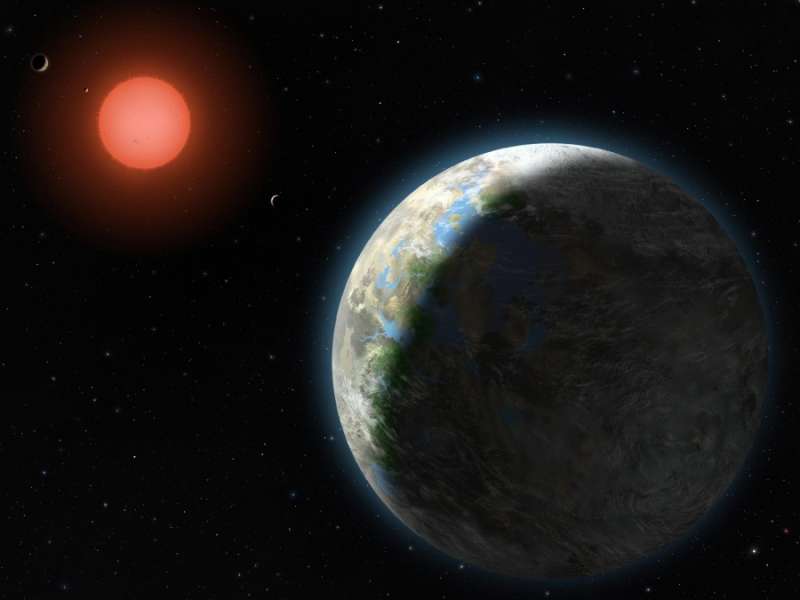Credit & Copyright: Lynette Cook
Explanation:
A mere 20 light-years away in the constellation Libra,
red dwarf star Gliese 581
has received much scrutiny by astronomers in recent years.
Earthbound telescopes had detected the signatures of
multiple planets orbiting the cool sun, two at least close to the
system's habitable zone --
the region where an Earth-like
planet can have liquid water on its surface.
Now a team headed by
Steven Vogt (UCO Lick), and
Paul Butler (DTM Carnagie Inst.)
has announced the detection
of another planet,
this one squarely in the system's habitable zone.
Based on 11 years of data,
their work
offers a very compelling
case for the first
potentially habitable planet found
around a very nearby star.
Shown in this
artist's illustration of the inner part of the
exoplanetary system, the planet is designated Gliese 581g, but Vogt's
more personal name is Zarmina's world, after his wife.
The best fit to the data indicate the planet has a circular 37 day
orbit, an orbital radius of only 0.15
AU,
and a mass 3.1 times the Earth's.
Modeling includes estimates of a planet radius of 1.5,
and gravity at the planet's surface of 1.1 to 1.7 in
Earth units.
Finding
a habitable planet so close by suggests
there are
many others
in our Milky Way galaxy.
1999 2000 2001 2002 2003 2004 2005 2006 2007 2008 2009 2010 2011 2012 2013 2014 2015 2016 2017 2018 2019 2020 2021 2022 2023 2024 2025 |
Yanvar' Fevral' Mart Aprel' Mai Iyun' Iyul' Avgust Sentyabr' Oktyabr' Noyabr' Dekabr' |
NASA Web Site Statements, Warnings, and Disclaimers
NASA Official: Jay Norris. Specific rights apply.
A service of: LHEA at NASA / GSFC
& Michigan Tech. U.
|
Publikacii s klyuchevymi slovami:
extrasolar planet - red dwarf - life - ekzoplaneta - krasnyi karlik - zhizn' vo Vselennoi
Publikacii so slovami: extrasolar planet - red dwarf - life - ekzoplaneta - krasnyi karlik - zhizn' vo Vselennoi | |
Sm. takzhe:
Vse publikacii na tu zhe temu >> | |
